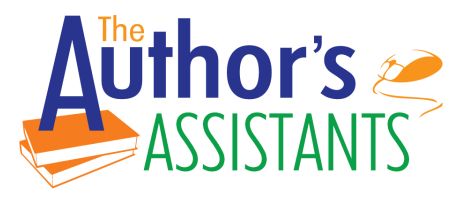Mar 7, 2023
What is your book’s metadata?
Metadata: Simply put. Your book metadata is any data that describes your book—including title, subtitle, price, publication date, ISBN and any other relevant information that readers use to find your book. Ultimately, it’s what connects your content to your prospective readers and is fondly referred to as your book’s “sales force”.
Discovery: The process by which the perfect customer finds your book. Discovery is essential to making a sale, because readers can’t read a book they can’t find.
Source: https://www.ingramspark.com/blog/7-facts-about-book-metadata#:-:text=Metadata°/03A20Simply°/020put°/02C%20your°/020book,use/020to°/020find°/020your°/020book.
Why is metadata important?
Your book’s metadata is important for many reasons. This information (see the list below) is what you will need for various book production and marketing data.
It all begins with your ISBNs. This is a numerical system of uniquely identifying your book among the millions out there. The ISBN number contains a “record” of your book comprised of title, subtitle, author name, author bio, book description, format (paperback hard copy or ebook), trim size, number of pages, categories, price, publication date, copyright, Library of Congress Catalog Number (LCCN), etc. This information can be gathered in advance of starting the book production process. And this information will be used again and again throughout the marketing process. So, having this in one easily accessible place makes it easy to provide accurate and consistent information each time you need list your book’s metadata for whatever reason.
Here is short list of where this metadata goes:
1. ISBN Record
2. IngramSpark/Amazon KDP
3. Smashwords
4. Book tours
5. Freebie and bargain book sites
6. Press releases/Marketing pieces
Consistency is important for your book’s metadata.
Where do you to start?
You start when you start writing your book. Likely your metadata will morph as you write.
What is your metadata comprised of?
1. Title
2. Subtitle
3. ISBN for each format
4. Publisher of record (hybrid, independent or other)
5. Book Description
a. Short description 250-300 words/characters
b. Long description of 500+ words/characters
* Kindlepreneur provides a great tool to format your book description: (https://kindlepreneur.com/amazon-book-description-generator/?affiliate=kpreneur )
6. Author name
a. Author bio
i. Short bio – 50-150
ii. Long bio – 250-350
b. Author photo (high resolution preferably in .png format)
7. Contributor name
a. Contributor short bio 50-250 words
8. Genre
a. Categories/BISAC (https://bisg.orq/page/BISACSubiectCodes) & Amazon (https://kdp.amazon.com/en US/help/topic/G200652170) (choose at least 10 categories in order of relevance)
b. Keywords – 5- 7 keywords or phrases for Amazon/KDP
*Amazon provides slots for 7 keywords or phrases, each containing a maximum of 55 characters.
c. 50-100 keywords for Amazon Marketing Services (sponsored ads)
9. Competition
a. 3-5 competitive titles in your genre
i. Pay attention to their selected categories
b. Note the book details such as:
i. Formats (ebook, paperback, hard cover)
ii. Number of pages
iii. Publication date
iv. Publisher
v. Price of each format
10. Price for each format (ebook, paperback, hard cover)
a. IngramSpark Cost Calculator
*IngramSpark Cost Calculator will give an estimate of the printing cost for your book: (https://myaccount.ingramspark.com/Portal/Tools/ShippingCalculator)
i. Printing costs continue to rise since COVID impacted supply chains
11. Format – specific description of your trim size. number of pages, cover matte or glossy. print, black and white or color.
12. Review quotes – assemble 5-10 positive review quotes either from individuals, interviews, bloggers, etc.
13. Audience – make sure you know the correct audience for your book, adult, high school, elementary, children, etc.
Let’s talk about categories.
Categories are very important in Amazon/KDP or anywhere. The categories that your book is listed in on Amazon/KDP determines your Book Sales Ranking (BSR). The BSR affects your standing as popular or not popular. Once Amazon sees your book sales rising and BSR decreasing (from #2,500,000 to #1) in a category the algorithm will turn on and Amazon will help you promote your book. Categories are everything for sales on Amazon!
When you upload your book, Amazon/KDP will allow you to submit 2 categories. Make sure these are the best, most popular and most relevant categories for your book. After your book is live on Amazon, you will be able to submit an additional 7 categories – 10 total.
Note: BISAC categories are slightly different from Amazon’s categories which is maddening. However, on Amazon’s help page about categories they will provide you with link to the BISAC website and list.
Keywords and why they are important.
Each print-on-demand publisher and many of the promotional sites ask for your keywords. Keywords are what people would use in a search engine like Amazon’s to find your book. The keywords you choose are just as important as the categories you use.
In Amazon/KDP you have the opportunity to list 7 keywords that best describe your book. Something important to note here is that each keyword field (the little box your type your keywords in) allows 55 characters. This means you can type entire phrases – a string of keywords that Amazon’s algorithm will index in any combination. This gives you the opportunity to NOT repeat keywords in each box thus expanding your options for keyword indexing and increasing your book’s ability to be found via Amazon’s search engine.
Why is pricing so important?
Every author sets out with “royalties” in mind. Usually, to offset the cost of the book’s production. Editing, formatting. cover design, etc. If you don’t research your book’s cost to produce you could be leaving money in Amazon’s pocket.
IngramSpark has a nifty little calculator that can help you estimate the cost to print and ship your book based on the format details, trim size, number of pages and shipping location.
(It’s best to play around with several states. Start in the East and work your way West – you can get an average to plug into your costs.)
Along with estimating a price for each of your formats – ebooks are pretty easy – typically they should be 1/3 of the cost of your print book. I prefer to research the competition and see what they are selling their books for. This will give an overview of your genre’s market.
Ideally if an ebook is priced a little on the high side, so when you discount the book for promotions to $0.99 – $2.99 it’s really a discount!
Along with estimating a price for each of your formats – ebooks are pretty easy – typically they should be 1/3 of the cost of your print book. I prefer to research the competition and see what they are selling their books for. This will give an overview of your genre’s market.
Ideally if an ebook is priced a little on the high side, so when you discount the book for promotions to $0.99-$2.99 it’s really a dscount!
Mar 19, 2021
 Let’s dive deeper into the differences of traditional and self-publishing.
Let’s dive deeper into the differences of traditional and self-publishing.
Traditional publishing refers to contacting agents and having your book accepted by a publisher. This is a long and slow process often filled with rejections. But, there is an upside. You get:
- prestige
- fast distribution
- ready made team of professional
- no upfront costs
- possible advance against royalties
- potential to become a known author
Then there’s the downside:
- a slow process
- loss of control
- lower royalties than self-publishing
- no marketing help
- contracts with detrimental clauses for the author
Self-publishing is the do-it-yourself version of book publishing. The pros are pretty exciting:
- creative control over all aspects
- faster to market
- higher royalties
- global market opportunities
- niche books reach their audience
The cons are worth considering for newbie authors:
- vetting a professional team
- a stigma remains (but it’s fading) around self-publishing
- financial burden is on the author
- bookstore distribution is difficult
I look to a blog post from Joanna Penn to explain the finer details, Pros and Cons of Traditional Publishing vs Self-Publishing. She details the many differences with great accuracy. Worth reading for clarification on traditional and self-publishing.
Self-publishing is the easier path and can lead to a traditional publishing opportunity if the author is extremely pro-active in marketing and sets up a well-planned author platform.
Mar 15, 2021
 Many authors come to me confused about book publishing. They may have done some research, participated in a few Facebook groups, talked with other authors and yet they don’t know exactly what steps to take to publish their book. They suffer from TMI (too much information).
Many authors come to me confused about book publishing. They may have done some research, participated in a few Facebook groups, talked with other authors and yet they don’t know exactly what steps to take to publish their book. They suffer from TMI (too much information).
Authors invariably state “I’m looking for an agent…” revealing grand dreams of a big-5 publishing company contract and launching their book to New York Times bestseller status. I admire their moxie but first-timers rarely see these dreams come true. If not traditional publishing then what?
Jane Friedman’s blog has countless articles about self-publishing. Her article, Start Here: How to Self-Publish Your Book is a great place to get the information authors need to get started. She answers a multitude of self-publishing questions and defines, traditional, self-publishing and hybrid publishing among many other relevant topics.
Personally, I’m a huge fan of self-publishing. Authors maintain control over every aspect of the book production process. The one thing I tell authors on a budget (and who isn’t these days?) is they control their cashflow. They can vet vendors and decide how much they want to pay and when they want to pay it. Unlike a hybrid publishing company that expects money upfront.
Read Jane’s blog. You won’t regret it.
Nov 19, 2019
All of you know the old adage, “It takes a village to raise a child.” Likewise, it takes a “team” to produce a great book. So I ask “Who’s on your team?”
The majority of authors I work with have day jobs that support their book-writing addiction. Their funds for book production are sometimes limited because of family needs and just plain paying bills. The costs associated with self-publishing may come as shock to some but it’s important to understand the investment mindset of publishing a book.
Yes, you need an editor, one who edits books in your genre and can offer the specific type of editing your book needs. Grammar, punctuation, comprehension, flow, etc. And yes, it is a large expense. However, consider the investment mindset here. You’ve worked so hard to create this book. You’ve put in hours and hours of writing, rewriting, reorganizing, removing, changing words and doing your own editing. Why wouldn’t you want to get the best editor for your book you could find to make it shine brighter than the other books in your genre? You’ve worked hard and you deserve to have the best possible version of your book presented to your audience. You need an editor on your team.
Next is the book cover. We all know books ARE judged on their covers. We are a visual society. Facebook posts garner more views with graphics, picture or videos. Twitter engagement is higher with photos and videos. Instagram was created specifically as a visual social media platform and see how that turned out? You need an eye-catching, well-designed book cover to catch your reader’s eye! Again, an investment in your book’s success. You need a book designer on your team.
You want your readers, to “read” your book, right? That’s the entire reason you spent so much time and effort to string all those specific words together on the page. If your book’s interior is not created for “reading” i.e. weird, hard to read fonts, too condensed spacing, hard on the eyes and all of the other issues that make a badly formatted book, your reader will bolt. You need to make your book’s interior just as eye-catching as the cover. A well-designed book interior entices the reader to spend time in its pages without getting eye fatigue. You need an interior book designer on your team.
How about marketing? Do you know how to market your book? Have you invested the time to learn all of the possible marketing trends, how to use them to promote your book and how to set up a timeline to optimize your book’s introduction to the world? If you have, go you! If not, you need a marketing team member too. While all of the above team members serve to create your book for release to the world, to your readers, a marketing team member helps you find your readers and sets your book up for the best possible introduction to the world. You need a marketing team member to launch your book so the world can find it!
Summary:
Your Team needs to have:
- Editor
- Cover Designer
- Interior Designer
- Marketer
As a self-published author, you should also have a budget that factors in the investment in each team member. And as a self-published author, you can make the decision of scheduling each team member’s contribution to allow you to manage your money and cash flow. So, take your time and research costs, plan your release timeline and create a budget. You will be making the biggest investment your book’s success by creating a solid and well thought out publishing plan.
Apr 9, 2019
1. Print (paperback or hardback)
2. eBook
3. Audiobook
The correct answer is ALL of them.
Think about it, what does an author want most from their book once they release it to the public? Return on their investment. Self-published authors especially want to recoup some of the cost of editing, typesetting, and cover design that they invested in to produce their book. If you limit your formats you potentially limit your income.
Take this thought one step further, once the book is released the investment doesn’t stop there. Marketing costs replace production costs. Publishing a book is starting a business. The costs continue to accrue regardless of the income generated.
Audiobooks are expensive to create and not all books lend themselves to the audio format. For example reference books, cookbooks, quotation books, interior design books, and travel guides. On the other hand, there are several genres that are perfect for audiobooks such as self-help/spirituality, history/biography, science fiction/fantasy, romance, business, health, and wellness.
Considering the rise in podcasting, an audiobook could reap great rewards not only in notoriety for the author but income royalty as well. It’s worth it to look at all formats whether you create all formats on your release day or gradually add additional formats as you can afford.
Resources:
GutenbergReloaded.com
ACX.com
Feb 6, 2017
So you market on your website too don’t you? I mean besides having all the information on your book, where to buy it (complete with “Buy Now” buttons that redirect to Amazon or wherever), you do announce your book being on sale, and post 4 and 5 star reviews too, right?! You also have a book trailer too don’t you?
We live in a visual world and images help sell anything. Book trailers are simple and contain good visual images related to your book, music and verbiage. They usually run about 2-3 minutes in length. If you have a YouTube channel you can upload them there too and imbed them in your website.
Here are a few suggested websites to check out –
How To Make a Book Trailer for FREE That Looks Professional
https://www.powtoon.com/blog/book-trailer-free-professional/
Spotlight on Business: 4 Elements of an Awesome Animoto Book Trailer
https://animoto.com/blog/business/animato-book-trailer/
For those of you who are not do-it-yourself inclined I highly recommend my good friend Andrea Kalli
https://www.facebook.com/marketingassistant/


